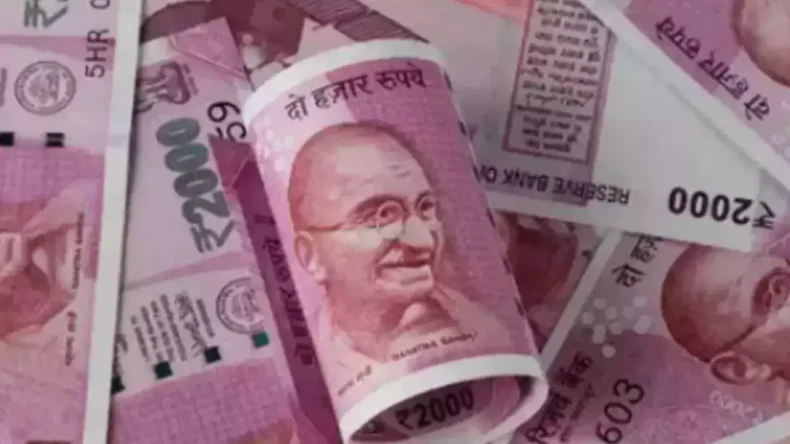The Indian rupee opened at 82.00 against the US dollar and dropped to 82.01 in interbank foreign exchange, resulting in a 6-paise decline from the previous closing.

The Indian rupee started the trading session on Wednesday with a 6-paise drop against the US dollar, influenced by foreign capital outflows and weak performance in the domestic stock market. The exchange rate opened at 82.00 against the dollar and then slid further to 82.01. On the previous day, the rupee ended at 81.95 versus the dollar. Meanwhile, the dollar index decreased by 0.04% to 101.82 as per reports. Brent crude futures, the global oil benchmark, increased by 0.37% to USD 81.07 per barrel. Due to growing geopolitical concerns and changing market sentiment, the currency is facing significant pressure.
According to Amit Pabari, the MD of CR Forex Advisors, the Indian rupee and US dollar pair are currently trapped in a narrow range of 81.80-82.20. To drive the pair towards 82.50-82.80 levels, it needs to break above the 82.20 resistance level.
The domestic equity market shows negative signs
Meanwhile, the domestic equity market showed negative signs, with the BSE Sensex falling by 157.29 points or 0.26%, trading at 59,973.42 points. Additionally, the broader NSE Nifty declined by 50.30 points or 0.28% and was trading at 17,718.95 points. The sluggishness in the equity market has been contributing to the pressure on the rupee, as investors are hesitant to invest in Indian assets amid uncertain economic conditions.
Overall, the currency market is facing several challenges in the current scenario, including geopolitical tensions, rising crude oil prices, and the ongoing COVID-19 pandemic. As a result, market participants are closely monitoring the economic and policy developments to determine the direction of the rupee’s movement in the coming days.
As per exchange data, Foreign Institutional Investors (FIIs) were observed to be net sellers in the Indian capital markets on Tuesday, with a total sale of shares worth ₹407.35 crores. The selling pressure from FIIs has been a significant concern for Indian policymakers, as it has been contributing to the volatility and weakness in the currency market.

The ongoing surge in COVID-19 cases, the possibility of a third wave, and concerns over the pace of economic recovery have been contributing to the cautious stance adopted by foreign investors toward Indian assets. Additionally, the rising yields in the US bond market have been attracting global investors, causing them to withdraw funds from emerging markets like India.
Overall, the trend in FII investments is closely watched by market participants, as it has a significant impact on the direction of the currency market and the Indian economy as a whole. As the global economic landscape continues to evolve, policymakers and market participants will need to take a proactive approach to address the challenges faced by the Indian economy and restore investor confidence.
Outlook for the Indian Economy
The Indian rupee’s depreciation against the US dollar can be attributed to several factors, including the continued outflow of foreign capital from Indian markets, which has been a major concern for the country’s policymakers. Additionally, the negative trend in domestic equities has dampened investor sentiment and weighed down the rupee’s value.
Moreover, rising global geopolitical tensions and sudden shifts in market sentiment have added to the volatility in the currency market, resulting in fluctuations in the exchange rate. Furthermore, the increase in crude oil prices, with Brent crude futures rising to USD 81.07 per barrel, has further compounded the challenges faced by the Indian economy, which is heavily dependent on oil imports.
Given the uncertain economic outlook and ongoing challenges, the Indian government and central bank are expected to continue implementing measures to stabilise the currency and strengthen the country’s economic fundamentals. However, the road ahead remains challenging, and it will take concerted efforts by all stakeholders to navigate through these uncertain times.













